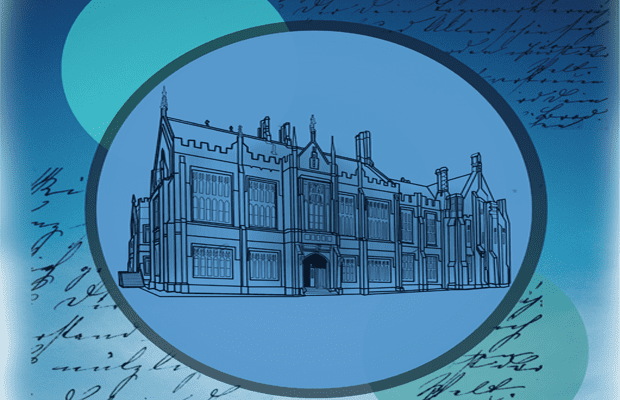A stone bench sits on the walkway above the inner courtyard of the neo-gothic Anderson Stuart Building, home of Anatomy and Physiology. A small plaque on the benchtop commemorates the 43 years of service of Anatomy Technician Barry Lockett. It’s a beautiful vantage to enjoy the late-afternoon sun, overlooking the central courtyard’s palm trees. Anatomy staff fondly remember Lockett’s regular smoke breaks there, “perhaps too many,” says one with a grin and smile. After all, the bench is an unassuming place, and in its quiet locale, is easily overlooked as a place for reflection. As University management now takes steps to evict researchers from wet labs in the building, the same peaceful courtyard has only recently transformed into a place of action. Posters with the words “Hands off Anderson Stuart!” cover nearby windows.
Small vignettes of simple stories, not grand narratives, colour the importance of the building for those affected by the University’s ongoing relocation plans. The bench and its plaque are emblematic of the heritage listed building and its namesake in the University’s founding Dean of the Medical School. A scratch beneath the surface of the building’s grand façade, stained glass windows and sculpted sandstone or a moment taken to cast an observant eye over its physical features, reveals a wealth of humble secrets.
A stone raven has kept watch over Eastern Avenue from high above the eastern entrance for 130 years, a testament to Anderson Stuart’s own humour and a jesting nod to his nickname amongst students, ‘coracoid’ (from the Greek for raven), a zoomorphic reference to Stuart’s prodigious nose. A second, modern, raven roosts on the tranquil Body Donor Memorial Fountain within the inner courtyard. Ghosts of the past inhabit every corridor of the building, gazing down from portraits of prominent academics and staff, including the formidable Mrs Ann Macintosh who shaped the Discipline of Anatomy for over 50 years with her generous bequests funding the refurbishments to the building’s JT Wilson and JL Shellshear Museums. For her tireless commitments to preserving the school’s history and reputation, her desk still continues to sit in the Shellshear Museum.
The unavoidable immediacy of the building’s history entrenches tangible links to the past that cannot simply be ignored. These links are a reminder that staff and students do not work and study in isolation but contribute to an ongoing history in which each individual plays a part, however small. Growing corporatisation of universities risks sacrificing these links in the name of efficiency, without regard for the importance of the past to influencing the future of our university and creating a sense of place.
Cutting up the dead is a sensitive business. The Anderson Stuart Building makes clear that there has been an ongoing and long-term commitment on behalf of Anatomy and Physiology leadership to create and maintain a culture of respect in research and teaching. When students walk past a memorial fountain dedicated to those who have offered their bodies to science on their way to dissections, it gives pause and room for reflection on the historical and personal context which they work within.
The affection for the building felt by those who conduct their research within, Anderson Stuart therefore comes as no surprise. It is impossible to feel disconnected from a sense of place and community in a workplace surrounded by personal reminders of those who have come before. While perhaps each individual story fails to cross into thresholds of grandiosity, collectively they forge a richer and more insightful portrait of the past and better reflect how most students contribute to the ongoing history of the university in the small stories that make up our own lives.
We would do well to reflect on and remember the role that physical reminders of our history play in maintaining an academic community. To ignore this would be to forget what gives buildings such as Anderson Stuart their value — their status as places of teaching and learning at a human scale.





